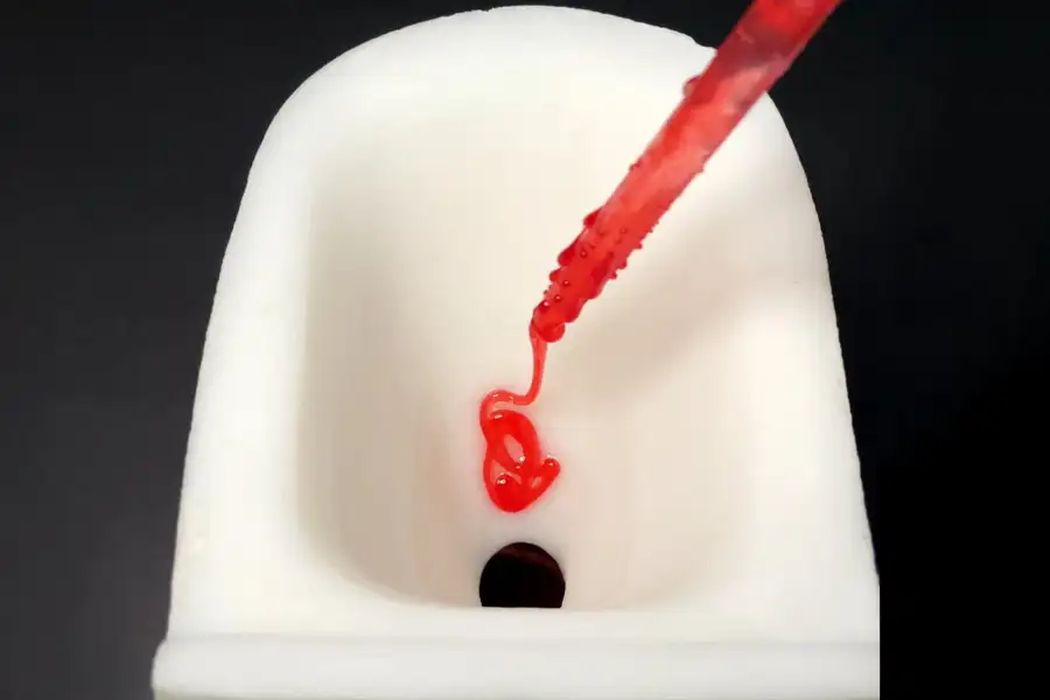
Researchers have developed an unusual 3D printed material that is incredibly slippery, ideal for toilets.
Toilets are possibly the last thing I’d expect to be writing about today, but here we are. Take a look at this video showing the results of using this material in a prototype toilet:
As you can see, the simulated poop slides off the surface with ease, making the toilet essentially self-cleaning.
Why do this at all? It turns out there is quite a valid reason that I had not considered. The researchers explain:
“Flush toilets waste a significant amount of water every day due to the unavoidable adhesions between human waste and the toilet surfaces.”
In other words, a super-slippery toilet surface would reduce use of water, which in some regions is becoming expensive.
How was this accomplished?
I was puzzled at first, because 3D printed objects typically have rough and porous surfaces, which are anything from smooth and slippery. I thought there might have been a mistake and another process had been used.
But no, 3D printing was indeed used for this work. They write:
“Herein, the fabrication of an abrasion-resistant super-slippery flush toilet (ARSFT) is reported using a selective laser sintering 3D printing technology. Unlike traditional super-slippery surfaces with limited thicknesses which can be easily worn away, the powder-sintered strategy endows the ARSFT not only with a self-supporting 3D complex shape but also with a porous structure that can accommodate considerable lubricants for an abrasion-resistant super-slippery property.”
Aha! They have leveraged the porosity of the print by infusing it with lubricants. This provides the slippery properties of the surface.
Evidently by choosing a suitable lubricant, the researchers were able to create a surface that resisted adhesion to all manner of sticky substances, including “highly sticky honey” and starch gel mixed congee”. And of course, “sticky synthetic feces”.
What’s interesting is that the lubricant doesn’t wear down for quite a long while. They report this:
“Notably, even after being abraded to 1,000 cycles of abrasion using sandpaper, the ARSFT maintains its record-breaking super-slippery capability.”
That means that you can even attempt to damage the surface and it still works as devised.
There are many implications to this discovery, beyond the introduction of self-cleaning toilets. The idea of infusing porous materials with liquids is quite intriguing and I have a suspicion 3D printed parts could be anointed with several different properties by using different liquids beyond just lubricant.
There now seems to be another vast area of investigation, triggered by 3D printed toilets.
Via New Scientist and Wiley
